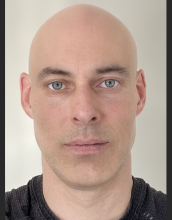Summary
Disclaimer: This summary has been generated by AI. It is experimental, and feedback is welcomed. Please reach out to info@qconsf.com with any comments or concerns.
Dany Lepage explores the challenges and strategies involved in expanding a VR game to flat screen platforms, such as phones and consoles. The presentation emphasizes the complexity of preserving the immersive experience inherent to VR games when adapting them to different platforms.
Introduction to VR and Market Dynamics:
- Discussion on the evolution of VR and its potential future where wearable technology becomes ubiquitous.
- Market reality: VR devices sales are significant but not as high as consoles like PlayStation 5.
Technical Challenges in Platform Expansion:
- The transition from VR to platforms like PlayStation 5, Steam, Android, and iOS.
- The need to adapt avatars, animation systems, and input mechanisms for each platform.
Challenges and Strategies in Immersion:
- Importance of immersion in VR and the difficulty in replicating it on other platforms.
- Discussions on how VR games like Poker Stars Real Money and Golf Plus leverage social interactivity and player expression.
Key Learning Points:
- The technical success of deploying a game across multiple platforms does not guarantee product success.
- Product market fit challenges, particularly with social interactions and player expression not translating well from VR to flat screens.
- Importance of Diversity, Equity, and Inclusion (DEI) in avatar systems and maintaining performance.
Conclusion:
Dany concludes by discussing the lessons learned from platform expansion, emphasizing the balance between technical prowess and market adaptation. Successful cross-platform development requires understanding each platform's unique capabilities and limitations, especially in maintaining immersive and engaging user experiences.
This is the end of the AI-generated content.
Abstract
Expanding the market of your VR game to other platforms may seem like an easy way to increase your revenues but the journey is all but simple. When what makes your game unique is the presence and immersion it provides, reproducing the experience on a flat screen is a daunting task. Winning conditions can vary widely between platforms and what made your game a winner on one platform may not provide the same value on another.
This talk will deep dive on platform characteristics and how you can mitigate the impact. We will also cover the key technical considerations to be aware when expanding to platforms as diverse as the PlayStation 5 and mobile phones. Some of those challenges like avatars are specific to the product but others like analytics, module decoupling and release are going to be encountered by any multiplatform products. We'll share how, with the proper architecture, processes and tools, new platforms won't feel like a drag on your product velocity.
Speaker

Dany Lepage
VP of Technology @Lucky VR - Building Virtual Vegas, xUbisoft, xFramestore, xNvidia
Dany Lepage has been Technical Director and VP of Technology at Lucky VR for over 3 years. Dany started his career in microelectronics at Matrox Graphics before moving to Nvidia. He then spent the next 15 years building video games at Ubisoft and then 5 years in location based entertainment at Framestore and Solotech. At Lucky VR, Dany's main focus has been to define the technical roadmap to evolve the product from being a VR only game to support many new platforms (cross progression / cross play).





